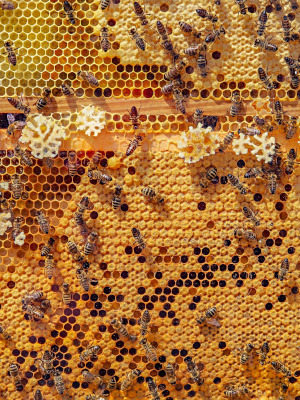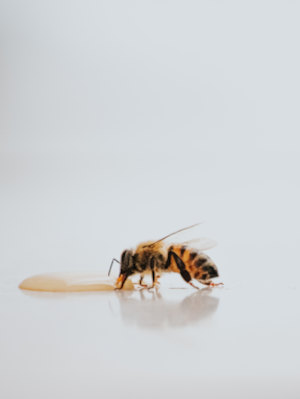Bees are some of the most fascinating creatures on our planet. In this article, you will discover 10 interesting facts about bees.
There are three types of bees inside the hive.
Honeybees reside in hives, also known as colonies. The hive is comprised of three distinct types of bees:
- The queen: The queen bee is responsible for managing the entire hive. Her primary duty is to lay eggs, which will give rise to the next generation of bees. Additionally, the queen produces chemicals that influence the behavior of the other bees.
- The workers: These bees are all female and have various responsibilities. They gather food by foraging for pollen and nectar from flowers. Workers also construct and safeguard the hive, as well as maintain air circulation by flapping their wings. When you see bees outside the hive, it is usually the workers that are seen.
- The drones: Male bees, known as drones, have a specific purpose of mating with the new queen. Each hive typically houses several hundred drones during the spring and summer. However, when winter arrives and the hive enters survival mode, the drones are expelled from the hive.

Worker bees can create a new queen bee.
In the event of the death of the queen bee, the worker bees will initiate the creation of a new queen by carefully selecting a young larva that has recently hatched and providing it with a unique substance known as “royal jelly.” This nourishment enables the development of the larva into a fecund queen bee, capable of reproducing and sustaining the colony.
Bees have an exceptional smell.
Each individual bee possesses a remarkable 170 odorant receptors, thereby providing them with an exceptional sense of smell. This sensory ability is used by bees to communicate with one another within the hive, and they use it to differentiate between different types of flowers when looking for food.
Bees are really fast.
Honey bees exhibit remarkable flying abilities, achieving a speed of approximately 25 kilometers per hour while flapping their wings at a frequency of 200 times per second.

Without bees, our diets would be a lot less exciting.
If honeybees were to disappear forever, humans wouldn’t go extinct just because of that. However, our meals would change drastically. We would have fewer food choices, and some things would become really expensive. The California Almond Board has been working hard to save bees because they say that almonds would disappear without them. We could still have coffee, but it would be hard to find and cost a lot. Coffee plants only have a few days when they can be pollinated, and if no insect comes during that time, the plant won’t make any coffee beans. There are many other examples, including apples, avocados, onions, and lots of berries need bees to grow. If honeybees disappeared or their numbers dropped a lot, these foods would become rare. People would still survive, but our meals would be a lot less exciting.
Bees have a short life.
The typical lifespan of a worker bee is limited to a mere five to six weeks, within which it is capable of making about one-twelfth of a teaspoon of honey. The queen bee has a lifespan of up to five years and is most active during the summer season. During this time, she can lay an impressive number of eggs, up to 2,500 per day.
A bee dies after it stings you.
Female worker honeybees possess barbed stingers that have evolved for the purpose of stinging other bees and insects. When viewed under a microscope, the sting of a worker bee resembles that of a harpoon, covered in two rows of saw-toothed blades. The stinger is connected to a venom sac, which pumps a toxin after the bee stings. The scent of this venom serves as a signal to other bees in the hive. When bees sting mammals, like humans, the barbs become wedged in their thick skin, causing the bee to rip away part of its abdomen and internal organs in an attempt to free itself. This ultimately leads to the bee’s death a few minutes later. While bees do not have blood per se, they essentially bleed to death. The venom continues to be pumped into the wound even after the bee has left its stinger behind.

Bees have four wings.
When flying, the two wings on each side connect to make a bigger pair. When they are not flying, they separate again.
Bees can dance.
Honeybees use the ‘waggle dance’ to tell the other bees in the hive where to find food. It’s not really a dance, but a way of talking. Sussex University scientists took two years to understand it.
Bees have smelly feet.
Bristol University scientists found that bumblebees can use their footprints to tell apart their own scent, a relative’s scent, and a stranger’s scent. This helps them find food better and avoid visiting flowers that have already been visited.
Sources:
https://www.natgeokids.com/au/discover/animals/insects/honey-bees/
https://www.nrdc.org/stories/world-without-bees-heres-what-happens-if-bees-go-extinct
https://www.discoverwildlife.com/animal-facts/insects-invertebrates/why-does-a-bee-die-after-it-stings-you
https://www.wwf.org.uk/learn/fascinating-facts/bees
